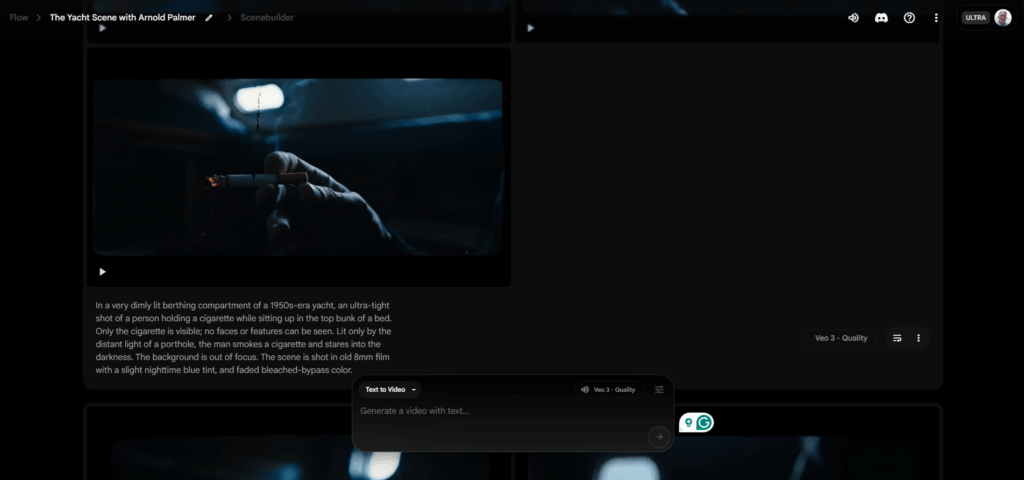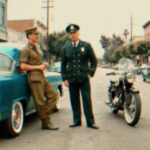
AI Can Be Our Friend
While there are debates over using AI in the creative world, video production companies such as Atomic Productions are finding ways to leverage the power of the technology to produce broadcast commercials, corporate videos, and documentaries with broader inventiveness and smarter budgets.
“Our philosophy with AI is to embrace it all,” states Atomic Productions’ Executive Producer Danny Angotti. “We are learning how to use it and use it to the best of our ability to improve what we do for our clients. It’s amazing technology that’s almost no different than any other tools we use for production.”
The Old Mattress on a Beach Trick
Mancini’s Sleepworld is a Bay Area institution with more than 50 years of experience in selling sleep solutions. For a recent campaign, the company asked Atomic to produce a “moment of zen” type spot with a mattress on a beach.
“The idea was that the spot would show on a streaming service when a viewer put a program on pause or during a commercial break,” explains Production Manager Lucy Nazareno.
“They wanted a beautiful, tropical beach scene with the water lapping gently on the shore,” Danny adds, “as the camera slowly zooms in.”
While an on-location shoot was ideal, budget constraints made it impossible. “We looked at sho oting on the Alameda beach,” starts Lucy, “but that wasn’t quite tropical.”
The Atomic team jumped into Sora to create just the right backdrop for the spot. “We were able to prompt Sora to give us a fairly realistic scene,” Danny explains. “We uploaded that asset into our system, edited as needed, added music and sound effects to match the mood, and delivered exactly what the client wanted.”
A Quick Fix to Save a Big Budget
HPE, a longtime Atomic client, had shot an explainer video with one of the company’s executives in Houston, Texas. During the editing process, HPE’s team uncovered a slight error in the voice-over.
“The executive lived in Connecticut, and it didn’t make sense to fly her all the way back to Houston to reshoot ten seconds,” explains Danny. “We pulled the audio into AI, cloned her voice, fixed the error in the script, and had it re-read. It wasn’t a lip-sync. We used a wide shot for that scene, but it was corrected without her having to do anything. She didn’t even know the difference in the end.”
AI Use Case in Historical Documentaries
For the past handful of years, the Atomic team has been painstakingly and lovingly working on a documentary film about the life of golfer Tony Lema titled “Golfingly Yours.”
The film covers Lema’s life and brilliant, but brief, career on the PGA Tour, which ended tragically in 1966. Because Lema’s story happened before Netflix recorded every second of a PGA player’s life for a documentary, many of the key scenes of Lema’s story were not captured on film.
Enter the power and promise of AI tools, including the text-to-speech voice generator from ElevenLabs. “We got permission from the family to clone his voice so he could become the narrator in some parts of this documentary,” says Angotti. “We had audio from a 30-minute reading that he had done in the 60’s, so we used that as a source file.”
AI tools, such as ChatGPT, also helped during the research process. The filmmakers were able to write prompts to outfit a 1960s-era flight attendant and a soldier in the 1950s.
Video creation tools also helped the team tell more of his story without having to recreate certain scenes at great expense. “Tony met his wife on a plane in 1963. How do we show that? Hire actors and find a location that works? Costumes and sets? Cars from that era,” Danny says. “And then there’s the plane crash where he died. It got really complicated.”
As the team looked for creative ways to solve these challenges, the technology improved enough that they could create realistic B-roll footage of Lema’s key life events, including a conversation with Arnold Palmer that took place on a boat at night. “The AI tools, and our ability to use them, made it so the film tells the whole story,” he says.
Creating Mission Control Digitally

One of the first projects where Atomic used AI was for Axiad. “They wanted the actor in a smoky Mission Control-type room that had a high-security look to it,” Lucy explains. “We started looking for locations, but it became clear that the budget wouldn’t allow us to go out and shoot it.”
The result, created within ImagineArts, met the challenge presented by the client.
“While it was created within AI, there is an aesthetic to the spot that comes from years of experience doing real-world commercials,” Danny points out. “No matter how good or fast the technology advances, someone still has to understand the shots and how to compose them so that it feels real. Not everyone will have that experience or be willing to put in the time and effort. That’s where our value comes in the process.”
Video Creation and Editing Tools
There is a distinct possibility that by the time you read this, 73 new generative AI tools will be available to both DIYers and professionals. One thing will no doubt be true — AI is here to stay when it comes to producing and editing video for advertising, documentaries, and corporate videos.

While not exhaustive, here are the AI video and audio tools that we are currently using at Atomic Productions:
Sora — great for complex scenes with the ability to render realistic motion and accurate details. We started here, but have moved on to other tools.
VEO 3 — an excellent AI engine that may have surpassed Sora, and offers us the ability to flex our DP muscles with its genre/style control. It creates a sense of realism well and produces sound for picture. Not as many tools as Sora yet, but it gets us closer on the first try than anything else. Plus, Flow is an excellent tool with VEO 3.
LTX Studio – great for storyboards and pre-production work
Runway — We like it for the real-time editing for shorter videos
Synthesia — that AI avatars are good for explainer and training videos
Adobe Podcast — we use it frequently for fixing audio tracks. Fun fact, Podcast clones the voice on the recording and redoes it rather than cleaning up the actual audio track.
“There are a lot of great tools out there,” Danny says, “but none of them are perfect. Give them a week and I’m sure they’ll be ready for primetime.”





